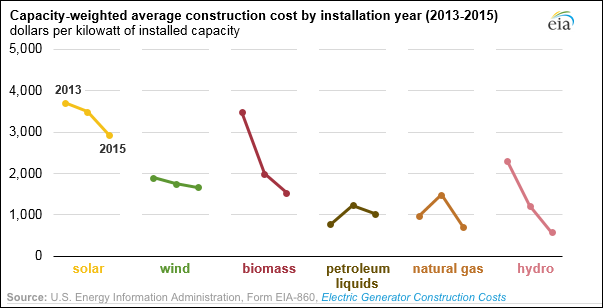
Graphic credit: Ars Technica
As everyone knows, the cost of renewable energy is getting cheaper all the time. But so are the costs of competing energy sources such as natural gas and nuclear.
Integral Molten Salt Reactor (IMSR) nuclear power technology, which uses molten salt as a cost-effective means to dissipate heat, is making its way through the regulatory hoops in Canada, according to The Next Big Future. Proponents claim that IMSR plants will be so much simpler and less expensive to build than conventional nuclear plants that they can be financed by conventional means. Construction time will be four years instead of eight; construction costs less than $1 billion compared to $6 billion. The levelized cost of electricity (which includes construction, financing, and fuel costs), advocates say, will be less that of super-efficient combined-cycle natural gas plants.
I know nothing about this technology or the claims made on its behalf, so I cannot say if they are credible or not. The larger point is that the nuclear industry is not static, and that new nuclear technologies have the potential to be game changers.
Meanwhile, says Ars Technica, the cost of building natural gas generators dropped 28 percent between 2013 and 2015, as super-efficient combined cycle plants came on line. Lower construction costs combined with technologies that capture more heat from a BTU of gas as well as vast and inexpensive supplies of of the fuel from the Marcellus and Utica shale basins have made natural gas more competitive economically than anyone expected only a few years ago.
Bacon’s bottom line: The energy industry is highly competitive and highly innovative. Refining and processing technologies under development could even revitalize the fortunes of the coal industry. The dynamism of the energy sector makes it difficult to make long-term predictions about the comparative economics of gas, coal, nuclear, wind, solar, and hydro with any degree of confidence. When we ponder the regulatory future of Virginia’s electricity industry, we should design a system that is nimble, adaptable, and does not lock the state into a particular energy path.


